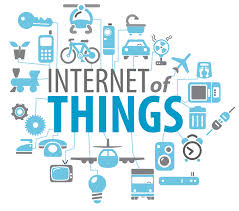Another cold January in New York City and another NRF Retail Big Show survived! As I have found with the countless times I have attended NRF the event is a whirlwind of insanity, but it is over before you know it. The insights, meetings and seeing old friends makes the entire adventure well worth it. So here are the take aways from the NRF16:
- The STORE IS BACK – okay maybe that is a tad dramatic, the store never went away, but the store in recent years has been down played. No longer is that the case. Many vendors and retailers I met with made a point of discussing their plans and initiatives for transforming their stores. The store is no longer viewed, by most, as simply the physical location that I want to go to in order to transact for an item. It is taking on a host of new responsibilities in the new commerce environment. At the crux of these new characteristics is the focus on the customer experience. Salesforce took us on a two site visit at Design Within Reach and Suitsupply, both in the Soho part of New York City. Other than the “cool” factor of the stores, what was discussed was how each store had meticulously thought of how to maximize the real estate they had and more importantly how they could leverage technology to better address their customers’ needs and experience once in the store. That experience has to go beyond offering you free cappuccinos or coupons, but how to ensure that the customer needs and untapped wants are addressed at the right time and with the right product. Other examples were of how True Religion is working with Aptos to empower the store associates to provide consumers with better experiences when it comes to finding that right pair of jeans. Putting the entire inventory catalog on the wrist of the store associate (via an Apple Watch) allows True Religion to be able to meet that customers’ demand, literally at the touch of

Weather cooperated…albeit cold!
a finger. There was also Avanade that had a smart grocery store shelf on display. Customers could simply pick up items and the smart displays would provide a host of information from nutritional content to where the food was sourced from. These were some intriguing examples of how retailers were working with service providers to bring exciting new technologies into the store – allowing the store to find its voice in the new commerce landscape.
- What is more important – perfect view of the order or the client? When we say perfect view of the order it really entails having a better understanding of your inventory levels across all channels. When it comes to the client is about truly understanding the context for the customer, what is driving their current, past and future demands. Having that 360 degree view of the customer has been all the rage recently, but are we missing the key element – the view of the order and of the inventory? This question kept ringing in my head as I went from meeting to meeting. What resonated with me was the need to address both, that the success of each was inevitably tied to the other. Service providers ranging from IBM to IFS are challenging the market on how to approach the need to have greater inventory and order visibility. It is not simply about the creative understanding of the customer, but also the ability to truly understand what products where and when that are available within the supply chain to fulfill the customers’ demands. Bottom line – regardless of how sophisticated and creative a retailer is in getting the customer to engage, if the product is not there at the moment of truth, then all those efforts are in vain.
- Smarter and dynamic fulfillment is the key – A major component of modern retail, driven by the consumer, is the push towards accessing orders wherever and whenever they desire. We already see the variety of methods we can access our orders – order on line delivery in store, order on line deliver to home, buy in store deliver to home, browse on line ship to store to name a few. As these forms of delivery continue to take on new dimensions, the business processes and technologies that support these new forms of last mile fulfillment will have to keep pace. This is continuing to place a strain on retail supply chains to meet these demands. Companies like 1800Flower are looking at all the nodes in their supply chain to assist in fulfilling their customer needs, in particular how their warehouses can play a more active role in the customer journey. We are seeing a growing number of retailers looking to redefine how they can meet the last mile in the retail supply chain. 2016 will continue to see these parts of the supply chain being leaned on to meet growing customer demands.
- Cool technologies are the future: smart displays, IoT, virtual reality and robots – Last year

Great catching up with old friends – Netsuite dinner.
there were lots of 3D printers on the floor, they seemed to have disappeared this year. Which I found surprising since in 2015 we have seen tangible examples of how retailers are leveraging 3D printers. For example Lowe’s is using the technology to offer customers the ability to procure items, such as door knobs and fixtures, that are no longer being produced. A great example of how retailers can expand their product offerings for their customers. Of course there remained plenty of examples of disruptive technologies on display on the floor of the Javits Center. Vendors such as Zebra Technologies, IFS, Avanade, Aptos to name a few were showcasing smart displays and how their customers were leveraging the technology. From greater view into their inventory to displaying information or being able to transact view the monitors – these smart displays are only beginning to find an important role within the store. Robotics were on display from the likes of Wipro – assisting with store navigation and shelf maintenance. IoT also was a theme that ran throughout the meetings I attended – companies like Checkpoint are continuing to add increased sensors and beacons within the store. They highlighted a timely use case in leveraging RFID and readers within a meat department of a grocer to allow greater and more efficient monitoring of the high margin but perishable product. In light of the recent news with Chipotle the use case is addressing headline news. Look towards 2016 as a continuation of disruptive technology growth within the retail landscape.
Once again I survived NRF and the cold New York City weather…it was actually a great trip…albeit I am still fighting some germs I picked up from the trip. I am very excited with the prospects for 2016 in the retail and supply chain space. Evolution is continuing to emerge at a rapid pace. Retailers cannot afford to take their eyes off the ball, they have to look internally to ensure they have the right business processes and mentality to keep pace. Service providers and vendors must also strive to act as true partners for this journey.
It is not going to be any easier in 2016, but it will continue to be exciting times.
You can also view my video from the show – click here.



